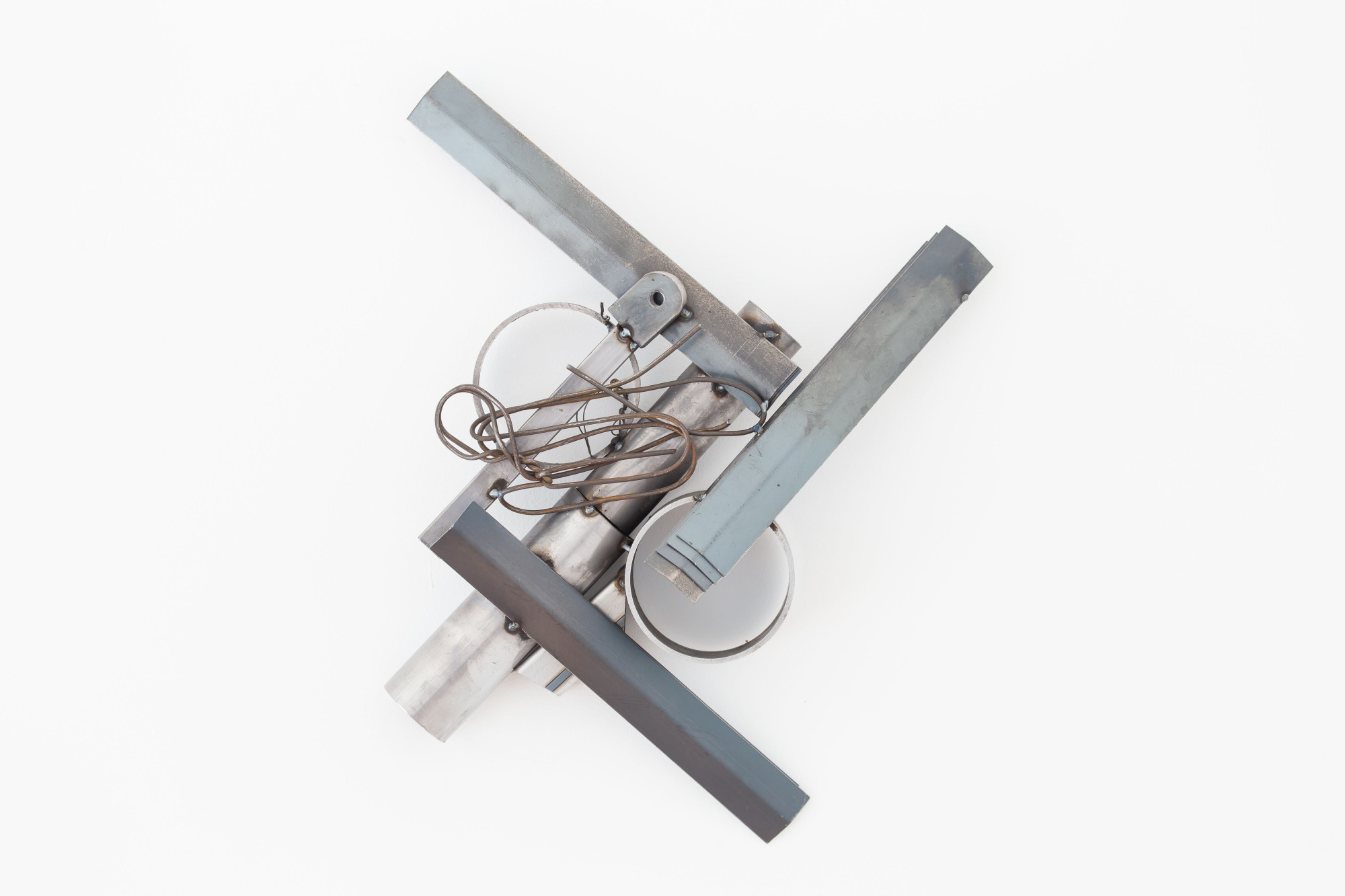The pairing of Hideki Kimura's prints with the seemingly sculptural assemblages of Sadaharu Horio is perhaps unexpected. What draws them together, however, are conceptions of their practices as painting. Both veterans of Japan's contemporary art scene, they pursue painting by other means, working within self-imposed limitations that engage conventions across art genres in alluring small-scale works.
From 1965-1972, Horio set in motion his varied art career as a member of the Gutai Art Association, a group of early postwar avant-garde artists known for pioneering performance "happenings," turning the Japanese tradition of New Year's card-sending into a modernist art practice, and the production of abstract painting comparable to contemporaneous postwar European and American developments in the arts. He has become well known for his continuing series, "A Matter of Course" ("Atarimae no koto"), which he began in the mid-1980s. The current exhibited works, his "weight paintings," focus on a subset of this.
Positioned on the gallery walls, Horio's "paintings" are assemblages of discarded machine-trimmed industrial metal odds and ends, including sections of pipe, coiled wire and flattened curtain-rails. A predetermined limitation for each painting is that the weight of the assembled iron fragments tally 3 kilograms, which in some sense also vaguely influences the size of each piece.



















With your current subscription plan you can comment on stories. However, before writing your first comment, please create a display name in the Profile section of your subscriber account page.